Editor’s Key Takeaways: Mastering Sunset Portraits: Comprehensive Guide to Camera Settings

The blog post offers guidance on capturing effective sunset portraits, outlining the optimal camera settings and detailing the benefits and drawbacks of working during the ‘golden hour’. Key elements of these settings include the aperture, ISO, shutter speed, exposure combination, metering modes, and white balance.
- Drawbacks of sunset portraits include rapidly changing light conditions, potential backlit subjects or overexposed skies, excess sun flare, and potential lack of contrast.
- The benefits include flattering golden light, even exposure throughout the frame, distinctive aesthetic, mild weather conditions, and the lack of squinting subjects due to the position of the sun.
The post advises beginning with exposure settings when shooting sunset portraits. This involves balancing the aperture, ISO, and shutter speed. The selected aperture is determined by the lens used, and a shallow depth of field is commonly preferred for portraiture.
Introduction
So many clients request that beautiful sunset time for their portraits, but while sunset portraits can look great, they’re often difficult to get right.
To help you out, we’ve written a guide to the best camera settings for sunset portraits. If you can master these, your photos will look amazing and you’ll book sessions nonstop!
And as a bonus, we added in 10 posing ideas to get your creative juices flowing. Enjoy!

Best Camera Settings for Sunset Portraits:
The Golden Hour: Benefits and Drawbacks
There is a reason clients are so attracted to sunset portraits: the golden rays of the sun make each shot look very ethereal and warm.
In fact, I get more requests for sunset portraits than pretty much anything else. Therefore, I work at sunset (also known as the golden hour) nearly every day!
However, there are a few sunset photography issues that can make your photoshoot experience a bit more difficult. Here are the problems that I’m talking about:
- The light changes rapidly, and you have a limited amount of time to work.
- Your subjects can be backlit or your sky can be overexposed.
- You might encounter too much sun flare.
- Your subject could get too washed out and lack contrast.
On the other hand, here are some of the benefits of sunset portraits:
- The golden light is flattering to everyone.
- Your exposure will be even throughout the frame (depending on position).
- Sunset photos have an eye-catching aesthetic.
- The weather is much milder during the sunset.
- Your subject won’t be squinting.
Your Sunset Exposure Settings
When determining the best sunset portrait camera settings, I’d recommend you start with your exposure. Exposure is the result of balancing three settings: the aperture, the ISO, and the shutter speed.
Here is what I suggest for sunsets:
Aperture

Your aperture is controlled by the lens you choose to use.
For portraits, most photographers gravitate toward standard or telephoto lenses. Standard lenses offer a perspective similar to the human eye, which makes for easy portraiture. Telephoto lenses do require you to stand farther back, but the compression created by the long focal length makes for very flattering portraits!
Now, the wider the aperture, the shallower the depth of field. After choosing the perfect focal length, many photographers will focus pretty exclusively on lenses with wide apertures such as f/2.8, f/2.0, f/1.8, f/1.4, and f/1.2. Top-notch portraits really require you to isolate the subject from the background, and the easiest way to do that is to create background blur.
Wide apertures have an added bonus: They ensure that the entire frame is covered in a gorgeous, rich yellow! (This has to do with how the sun’s rays hit the glass of your camera lens.)
Plus, the wider the aperture, the more light that gets through to the sensor. We may think the golden hour is bright, but to a camera sensor, it’s often pretty dark. The more light you let in, the longer you can shoot.
This is all a long-winded way of saying that you should shoot at apertures of f/2.8 or wider!
There is a benefit to deeper apertures if they’re more your style. For instance, if you’re shooting your subject directly against the sky and want that sky to look clearer, switch to something like f/5.6 or f/9. Just be aware that the frame will be darker, and you may need to use artificial lighting to keep your subject well exposed.
ISO
ISO refers to the way your camera sensor utilizes light. (That’s not exactly how it works in digital gear, but the difference isn’t important for good sunset photography.)
Unless you’re after retro vibes, you want your portraits to feature as little noise as possible. The higher the ISO, the brighter the image – and the more noise you’ll get. Therefore, you should keep your ISO as low as you can without compromising image exposure. Granted, you can definitely remove some noise in post-processing, but why not get it right in camera and save yourself the trouble?
When shooting portraits at sunset, I suggest using an ISO range of 200-800. Don’t go past ISO 800 unless you have a camera that offers incredible high-ISO noise performance.
Shutter Speed
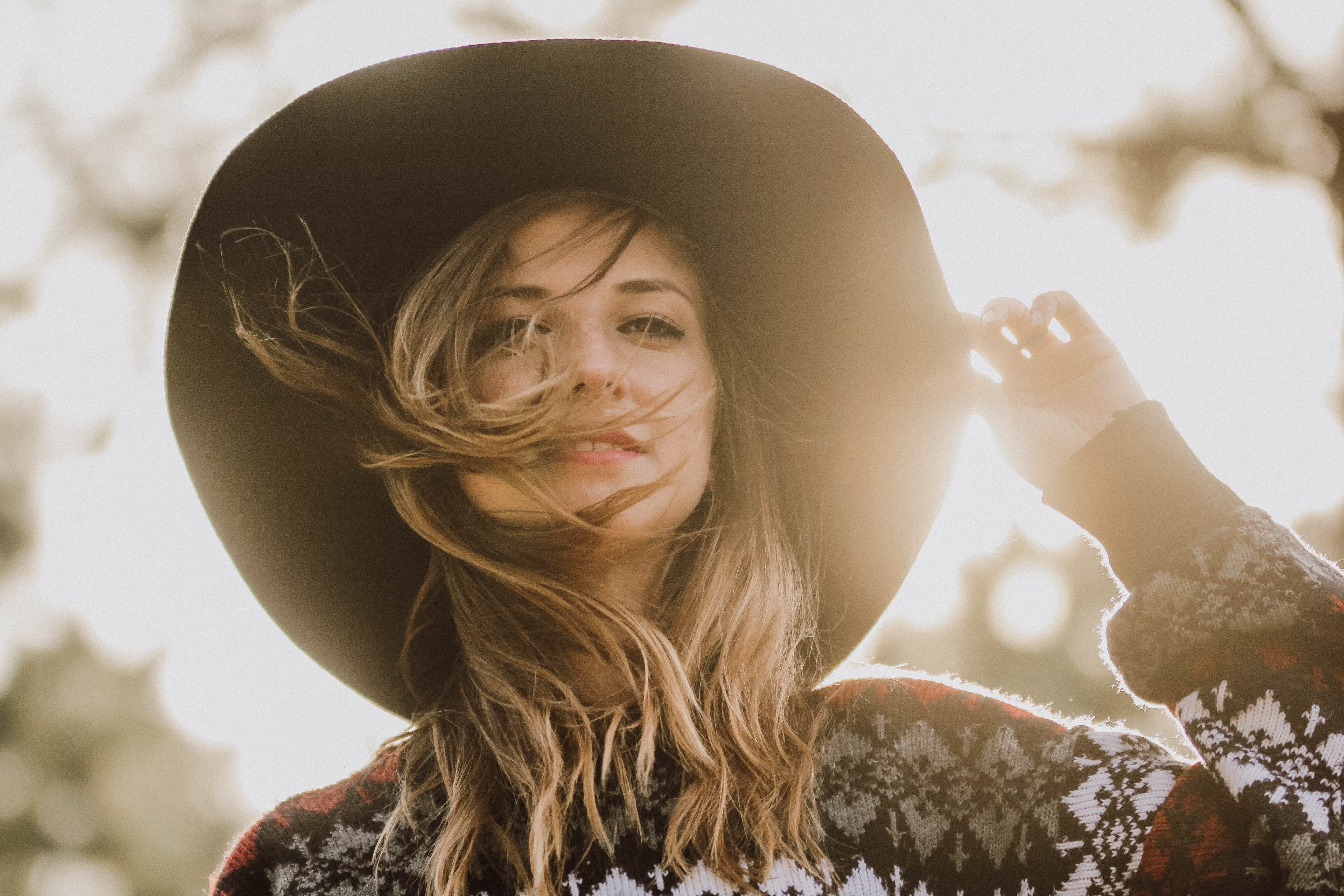
The shutter speed refers to how fast the camera takes the shot. Since you’re capturing portraits, you don’t need it to be terribly fast. Most sunset portraits are shot handheld, so I definitely highly recommend a shutter speed above 1/250s so your shaky hands don’t impact the shot!
The faster the shutter speed, the easier it is to get sharp shots, of course. But remember: The faster the shutter speed, the darker the exposure. So fast shutter speeds are great when the sunset is just beginning, but as the sun sets below the horizon, you’ll need to slow it down.
How to Determine the Best Exposure Combination
When shooting sunset portraits, my trick is to select a baseline setting, select a secondary setting of importance, and then choose one setting to adjust as the sun moves below the horizon.
Related Posts
Typically, I set my aperture as the baseline. The aperture won’t change as I shoot. Next, I set my ISO because I want to minimize noise as much as possible; I try not to change this too much.
Finally, I set the shutter speed based on my first two settings. The shutter speed is what I change as the sun moves!
Other Sunset Portrait Camera Settings
There are a few additional settings that will make a difference to your sunset portraits:
Metering Modes
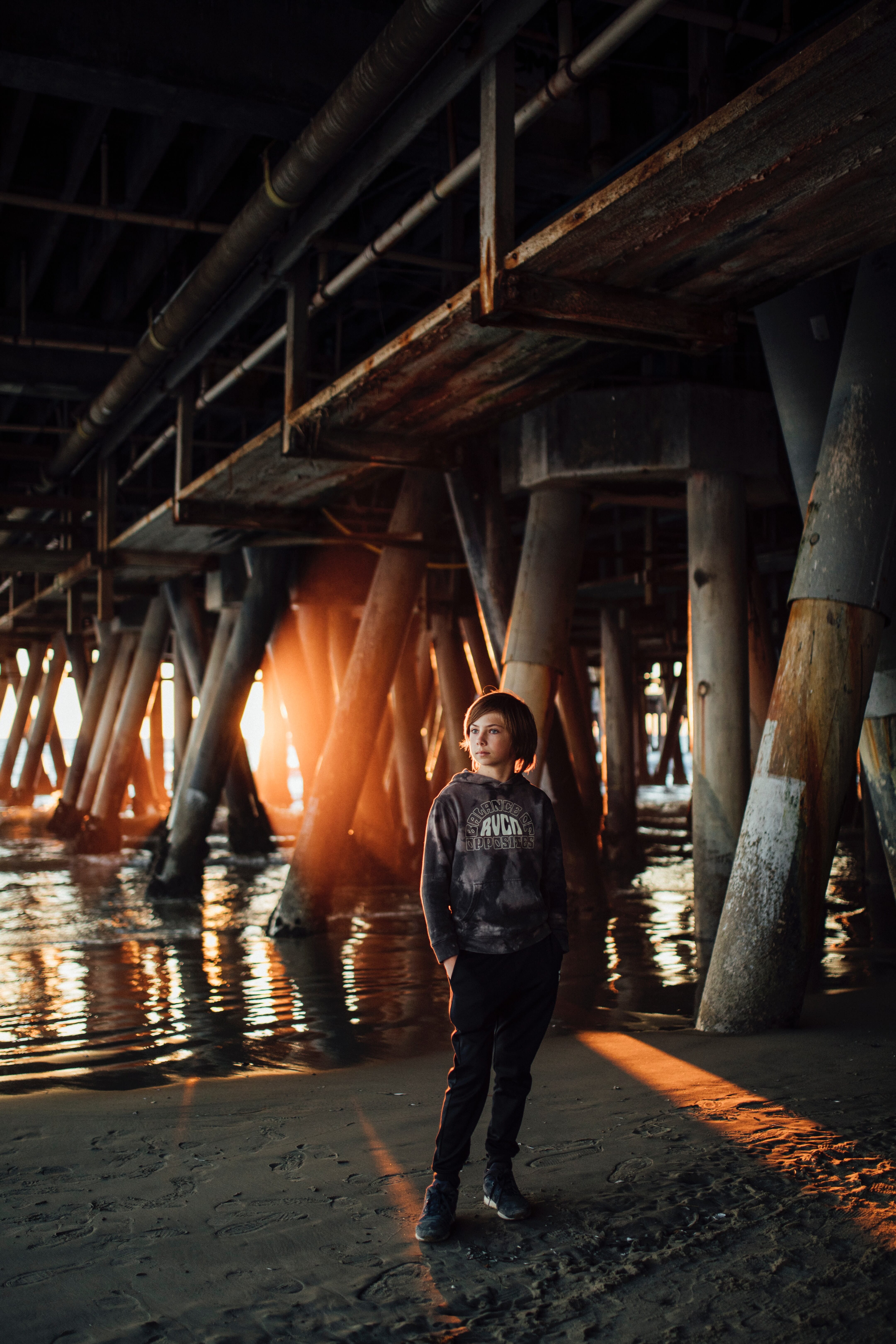
Your camera’s meter reads the light and tells you whether or not your exposure settings are too dark, too light, or just right. The camera does this by measuring how light reflects off the scene.
You can actually adjust your meter to measure certain parts of your image; this is called the metering mode.
By default, your camera is set to Matrix/Evaluative metering. This mode considers all of the shadows, highlights, and midtones in the photo rather than just the subject. It’s great if you’re trying to expose evenly throughout the frame.
However, sometimes the sunset can be so powerful that this mode backfires. When that happens, you can switch to either spot metering or highlight-priority metering.
Spot metering measures exposure exclusively off of your focus point. This is great to use when you really need to focus on exposing your subject properly.
However, if you want to properly expose the sky, I suggest highlight-priority metering. This mode considers only the highlights of the image and helps prevent sky overexposure.
White Balance
White balance refers to how colors are captured by your camera. The golden hour is quite warm, so sometimes colors might turn out a bit too yellow. You can set your white balance to “Sunny” and see if that helps neutralize the colors a bit!
That said, Auto White Balance isn’t actually too bad. The downside is that the images won’t have a consistent white balance throughout the shoot, so you’ll see color inconsistencies in the image batch. If you’re only planning to use one or two images – and you’ll be editing them – that’s fine! If you’re delivering a full gallery, dealing with lots of color inconsistencies is a pain.
Should You Use Flash?
There is a lot of debate over whether you should use flash or strobes for sunset portraits. What do I say? It depends on the style you’re after!

If you’re looking to fill the whole frame with golden light, then shooting without flash is the way to go. Flash can overpower the golden rays and wash them out too much.
You also don’t need a flash if you’re shooting your subject looking toward the sun as they will be very evenly lit.

However, if you’re looking to capture a well-exposed subject and a well-exposed sky or are shooting against the sun, then artificial light is essential. This is because a camera cannot expose for the lightest parts and the darkest parts of the frame at the same time! By using a flash, you can brighten your subject to match the sky, allowing your camera to expose for both simultaneously.
10 Sunset Poses to Get You Inspired
Finally, here are ten poses and shooting ideas to get you started on your sunset photography journey:
1. Frolicking
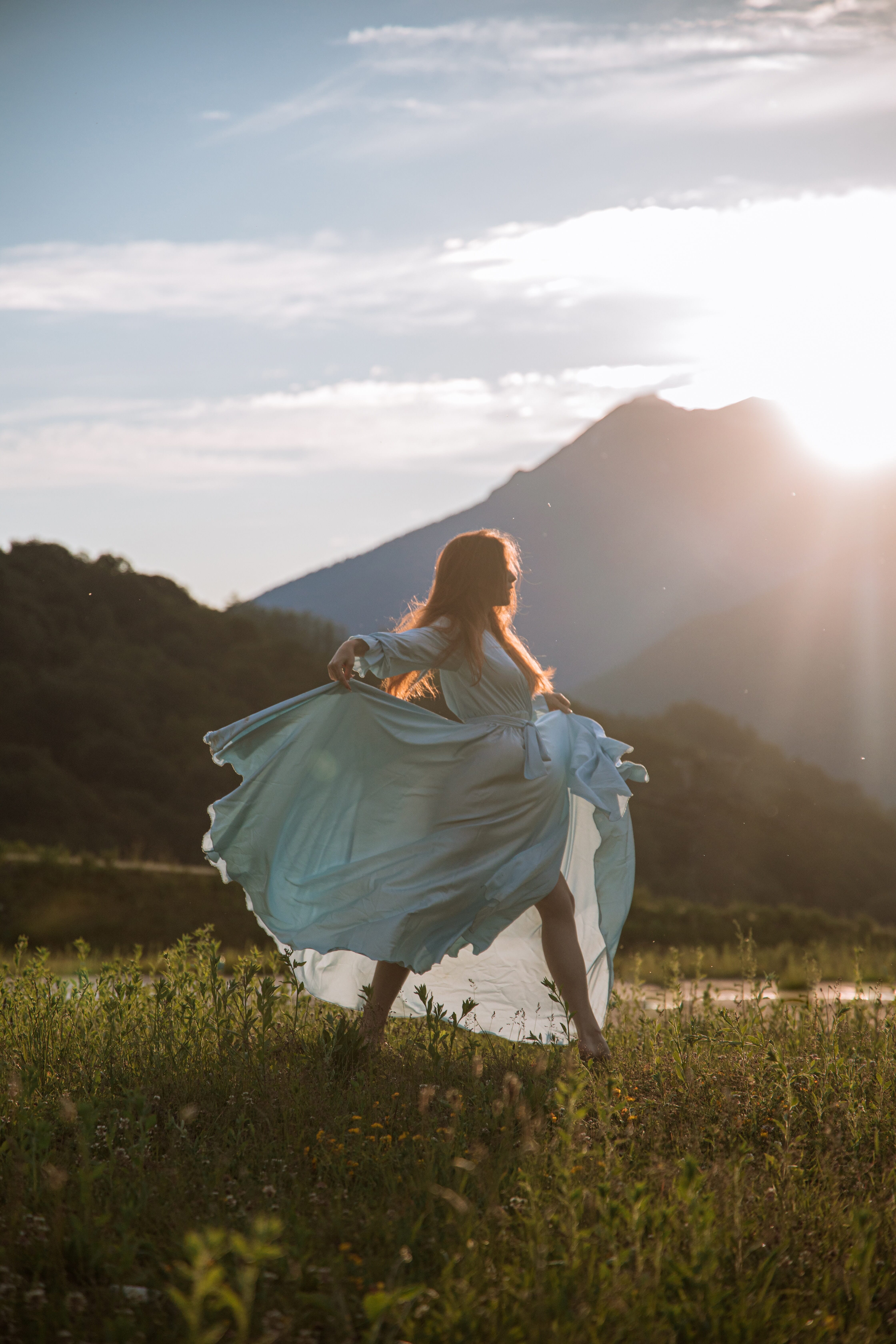
Nothing is more carefree than a gorgeous frolic through a field while the sun is setting!
2. Fingers Touching

You can create very emotive hand portraits against a brilliant sky.
3. Heart Shape

Go ahead and make a heart over the sun! You can deliberately underexpose for a beautiful silhouette.
4. Opening to the Sun

There are a lot of metaphors associated with the setting sun – for instance, closing the day’s chapter while opening up the chapter of tomorrow. A silhouette in this powerful pose can be very moving.
5. Spinning and Dancing

Dancing in the sun’s rays mimics the light moving across the horizon!
6. Over the Shoulder
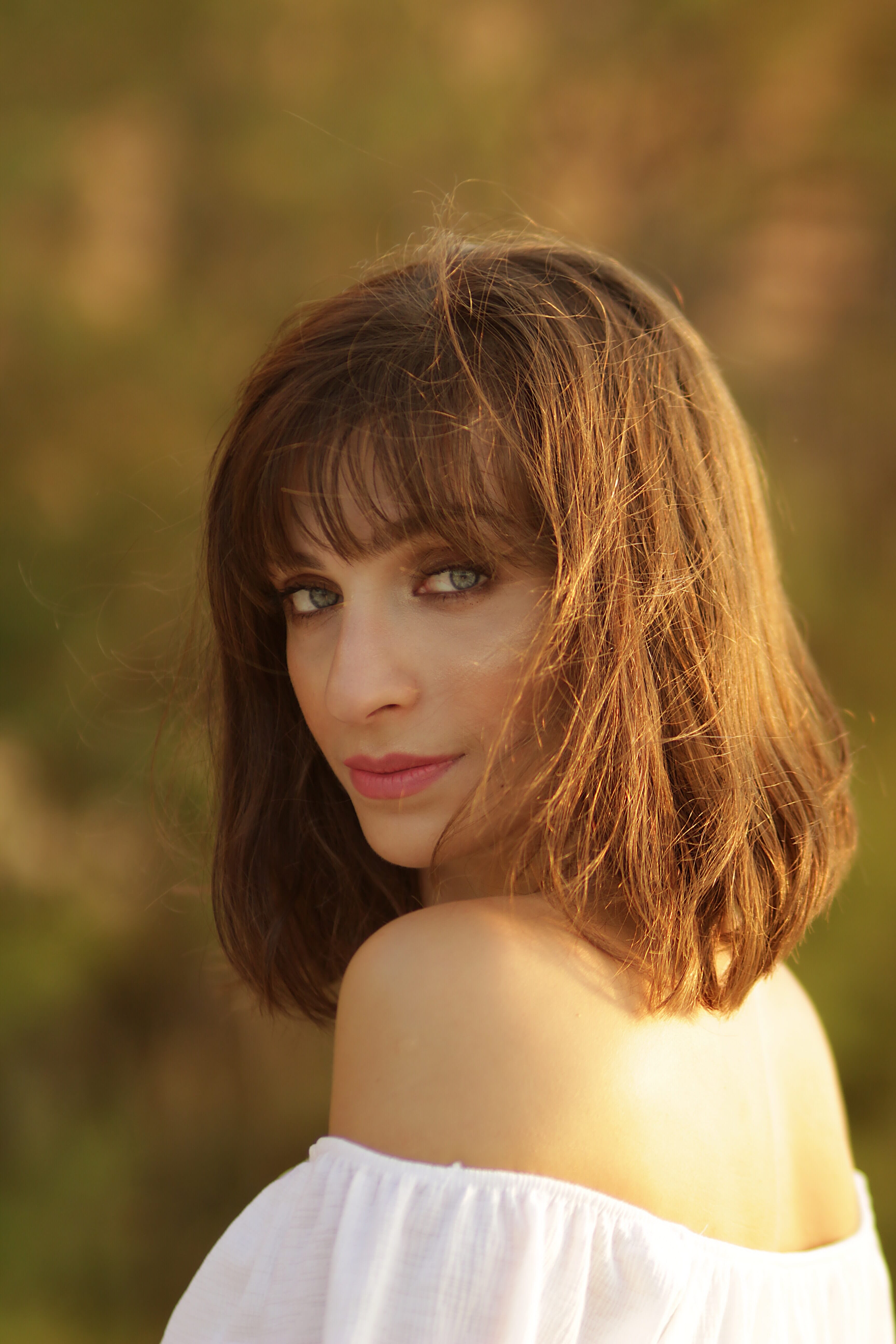
This is a simple emotional portrait, and it’s made even more wonderful by the sunset. Try to position your subject so that they’re covered in golden sunlight.
7. Album Cover
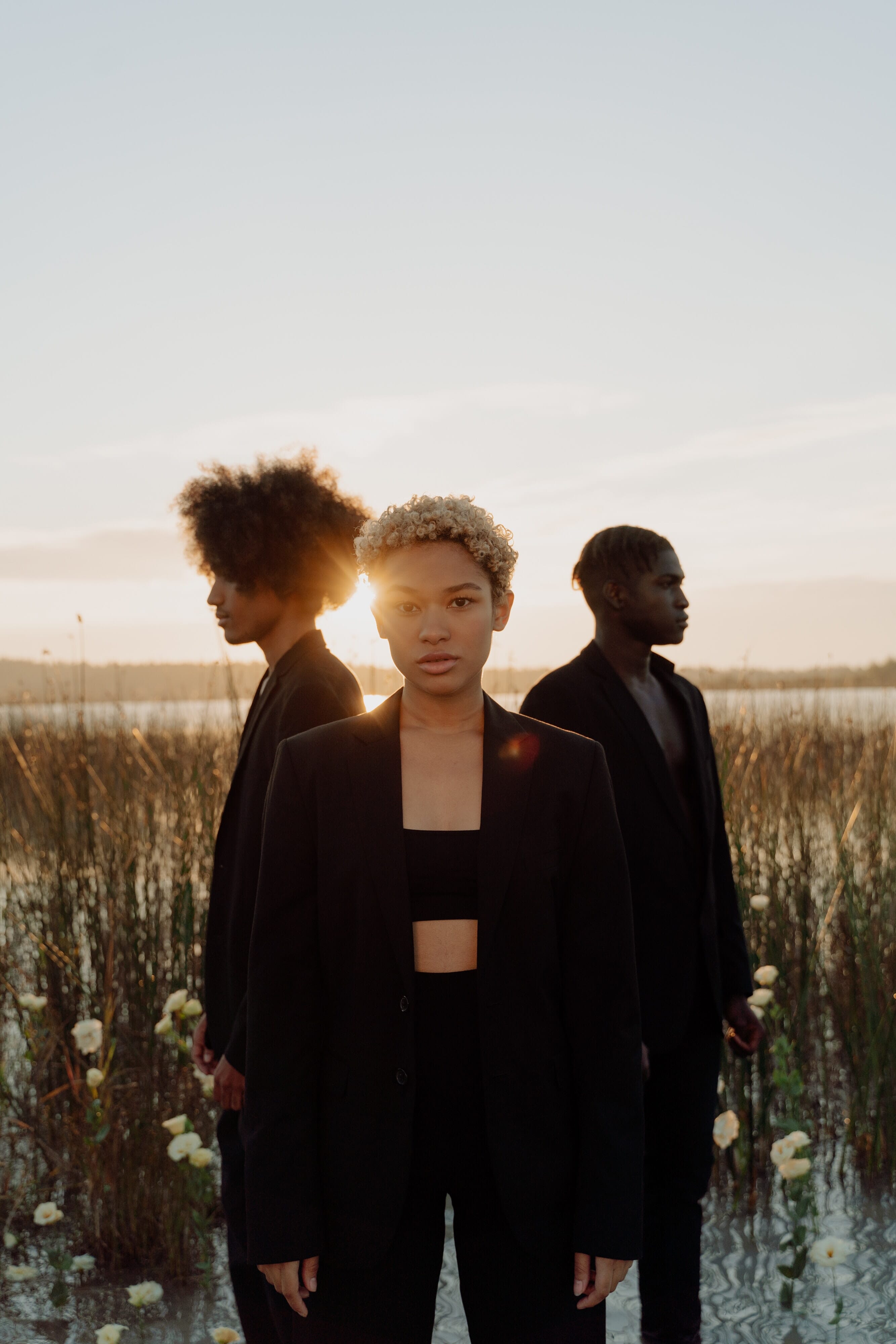
If you are capturing more than one subject, why not pretend you’re shooting an album cover? Play with different head directions to create a unique composition.
8. 45-Degree Angle
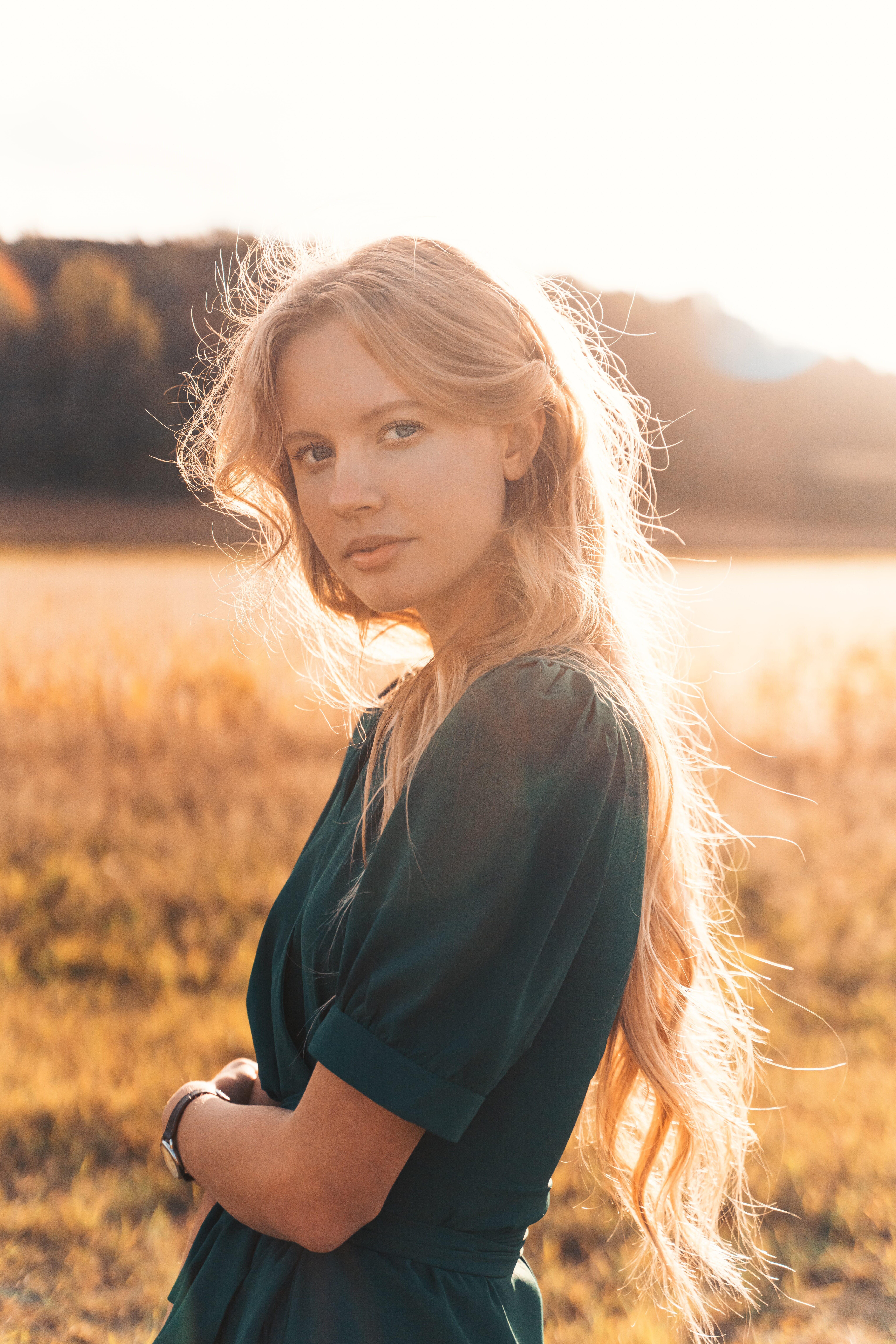
This is the most classic portrait you can capture, and it pretty much always looks great. Pair this pose with the golden hour and you have a recipe for success.
9. Back to the Camera
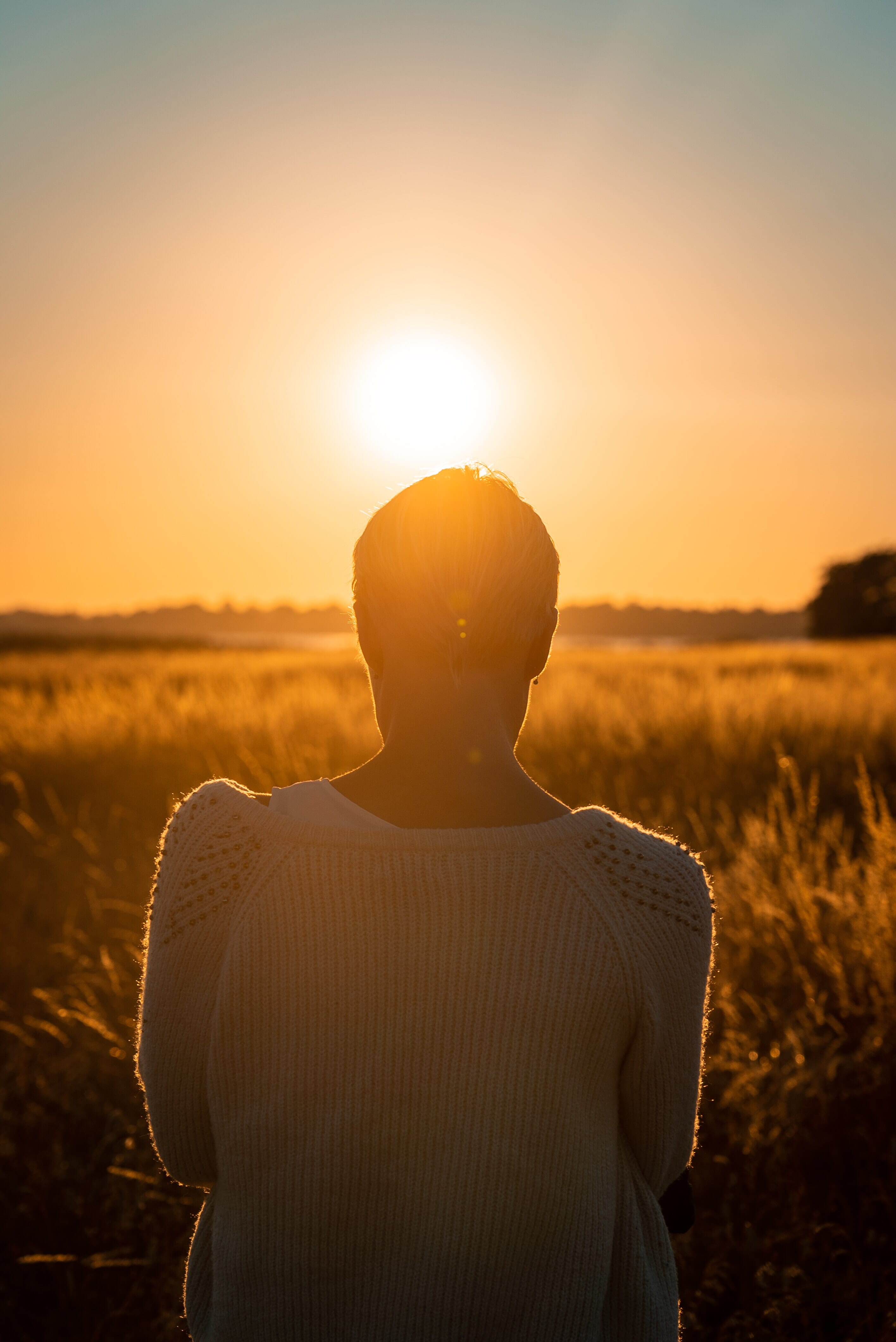
Ask your subject to turn away from the camera and look toward the sun. It’s an incredible way to capture both your subject and the beautiful sky.
10. Walking Toward the Camera
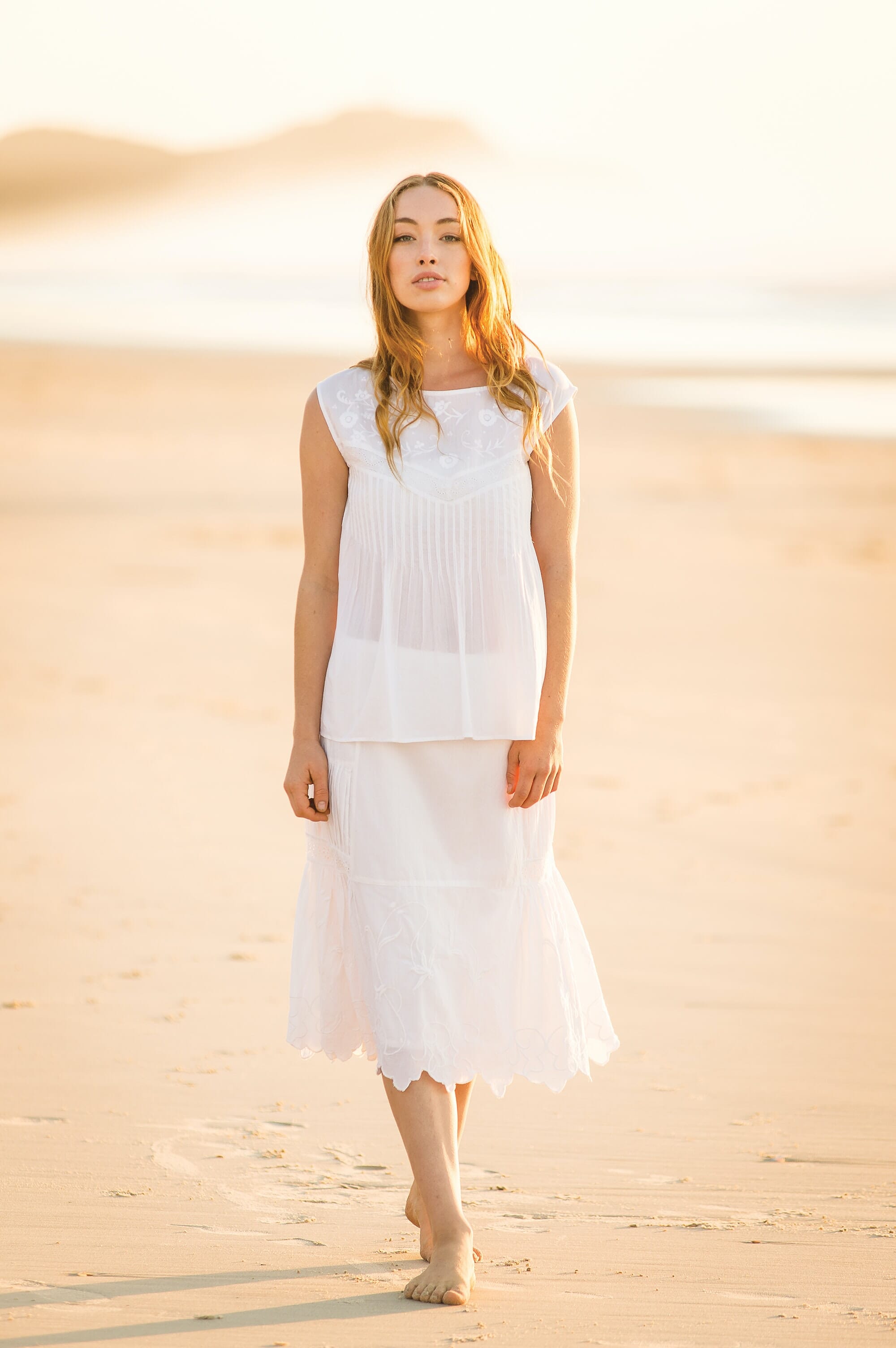
This is another sunset classic that makes for a visually striking result.
Capture Stunning Sunset Portraits!
We hope this guide sheds some light (no pun intended!) on sunset portrait photography.
The next time you head out for a sunset photoshoot, remember the advice from this article. Your photos will turn out amazing!
